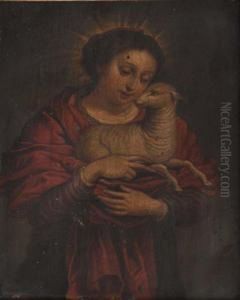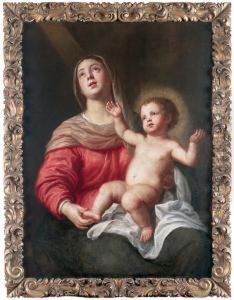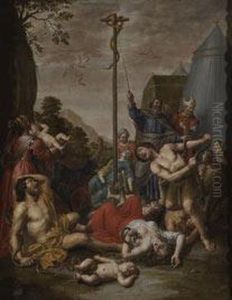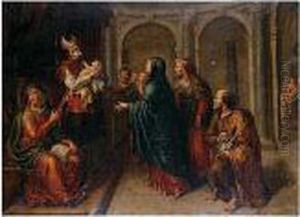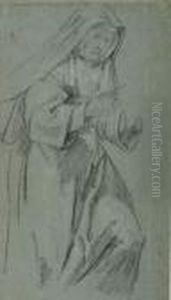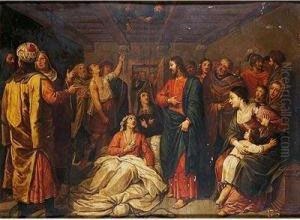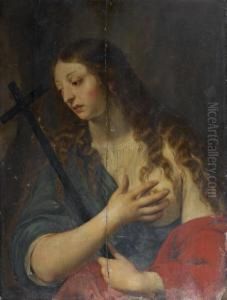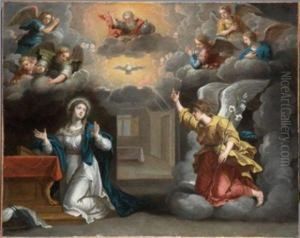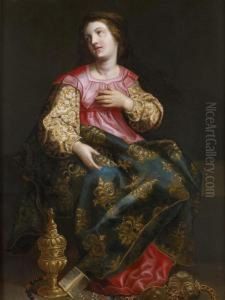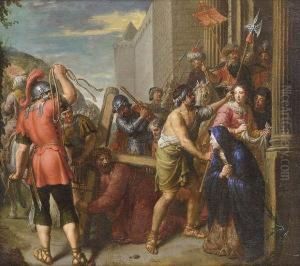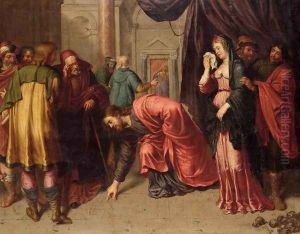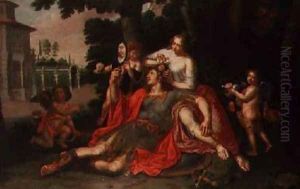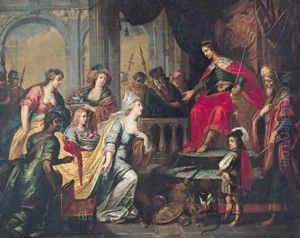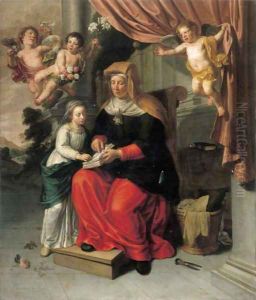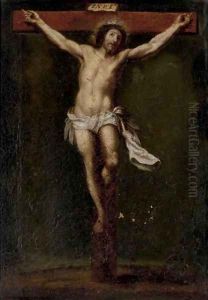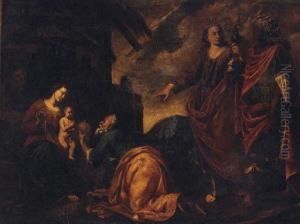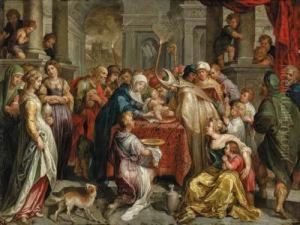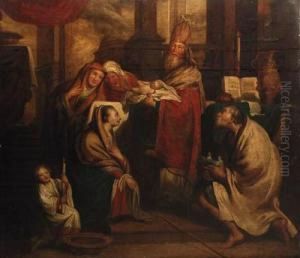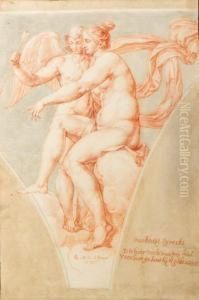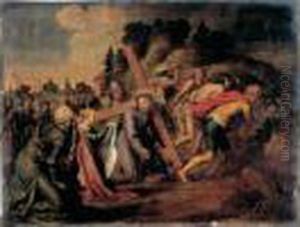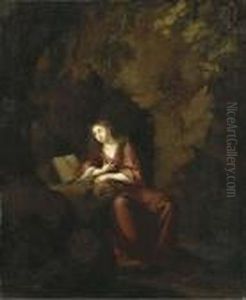Pieter van Lint Paintings
Pieter van Lint was a Flemish painter and draughtsman who was born on June 28, 1609, in Antwerp, Belgium. He was a member of the prominent van Lint family of artists, which included several generations of painters. Despite being less well-known than some of his contemporaries, van Lint made significant contributions to the Baroque movement, which was characterized by dramatic expression, rich coloration, and the interplay of light and shadow.
Van Lint was a pupil of the painter Artus Wolffort, and his early work was influenced by the style of the Antwerp school, particularly the influence of Peter Paul Rubens. He is known to have traveled to Italy early in his career, where he spent an extended period from 1628 until 1635. This Italian sojourn was formative for van Lint, who was greatly influenced by the works of the Italian masters. During his stay, he worked in Rome and was influenced by the works of Caravaggio and the Bolognese school.
After his return to Antwerp, van Lint became a master in the Guild of St. Luke in 1640. He produced a variety of works, including historical and mythological scenes, landscapes, and portraits. His Italian experiences continued to influence his style, which often featured classical themes and a warm palette that reflected the Mediterranean light he had observed.
Van Lint was also known for his religious works, and he created several altarpieces for churches in Antwerp and surrounding areas. His religious paintings are noted for their devotional character and attention to detail, which made them popular among the Catholic patrons of the time.
Despite his talent, Pieter van Lint did not achieve the same level of fame as some of his contemporaries. However, his works are appreciated for their craftsmanship and contribution to the Baroque aesthetic. Van Lint's paintings can be found in various museums and collections across Europe.
Pieter van Lint passed away on September 25, 1690, in Antwerp. His legacy is preserved through his influence on later Flemish artists and the artworks he left behind, which continue to be studied and admired for their beauty and historical value.
